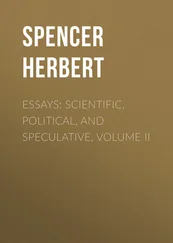Let me add that apart from the elucidations furnished by the phenomenon above described, the probabilities are greatly in favour of the cyclonic origin of the solar spots. That some of them exhibit clear marks of vortical motion is undeniable; and if this is so, the question arises—What is the degree of likelihood that there are two causes for spots? Considering that they have so many characters in common, it is extremely improbable that their common characters are in some cases the concomitants of vortical motion and in other cases the concomitants of a different kind of action. Recognizing this great improbability, even in the absence of a reconciliation between the apparently conflicting traits, it is, I think, clear that when, in the way above shown, we are enabled to understand how it happens that the vortical motion, not ordinarily implicating the photosphere, may consequently be in most cases unapparent, the reasons for accepting the cyclonic theory become almost conclusive.
[25]If the "rice-grain" appearance is thus produced by the tops of the ascending currents (and M. Faye accepts this interpretation), then I think it excludes M. Faye's hypothesis that the Sun is gaseous throughout. The comparative smallness of the light-giving spots and their comparative uniformity of size, show us that they have ascended through a stratum of but moderate depth (say 10,000 miles), and that this stratum has a definite lower limit. This favours the hypothesis of a molten shell.
[26]I should add that while M. Faye ascribes solar spots to clouds formed within cyclones, we differ concerning the nature of the cloud. I have argued that it is formed by rarefaction, and consequent refrigeration, of the metallic gases constituting the stratum in which the cyclone exists. He argues that it is formed within the mass of cooled hydrogen drawn from the chromosphere into the vortex of the cyclone. Speaking of the cyclones he says:—"Dans leur embouchure évasée ils entraîneront l'hydrogène froid de la chromosphère, produisant partout sur leur trajet vertical un abaissement notable de température et une obscurité relative, due à l'opacité de l'hydrogène froid englouti." ( Revue Scientifique , 24 March 1883.) Considering the intense cold required to reduce hydrogen to the "critical point," it is a strong supposition that the motion given to it by fluid friction on entering the vortex of the cyclone, can produce a rotation, rarefaction, and cooling, great enough to produce precipitation in a region so intensely heated.
Table of Contents
[ First published in The Universal Review for July, 1859.]
That proclivity to generalization which is possessed in greater or less degree by all minds, and without which, indeed, intelligence cannot exist, has unavoidable inconveniences. Through it alone can truth be reached; and yet it almost inevitably betrays into error. But for the tendency to predicate of every other case, that which has been found in the observed cases, there could be no rational thinking; and yet by this indispensable tendency, men are perpetually led to found, on limited experience, propositions which they wrongly assume to be universal or absolute. In one sense, however, this can scarcely be regarded as an evil; for without premature generalizations the true generalization would never be arrived at. If we waited till all the facts were accumulated before trying to formulate them, the vast unorganized mass would be unmanageable. Only by provisional grouping can they be brought into such order as to be dealt with; and this provisional grouping is but another name for premature generalization. How uniformly men follow this course, and how needful the errors are as steps to truth, is well illustrated in the history of Astronomy. The heavenly bodies move round the Earth in circles, said the earliest observers: led partly by the appearances, and partly by their experiences of central motions in terrestrial objects, with which, as all circular, they classed the celestial motions from lack of any alternative conception. Without this provisional belief, wrong as it was, there could not have been that comparison of positions which showed that the motions are not representable by circles; and which led to the hypothesis of epicycles and eccentrics. Only by the aid of this hypothesis, equally untrue, but capable of accounting more nearly for the appearances, and so of inducing more accurate observations—only thus did it become possible for Copernicus to show that the heliocentric theory is more feasible than the geocentric theory; or for Kepler to show that the planets move round the sun in ellipses. Yet again, without the aid of Kepler's more advanced theory of the Solar system, Newton could not have established that general law from which it follows, that the motion of a heavenly body is not necessarily in an ellipse, but may be in any conic section. And lastly, it was only after the law of gravitation had been verified, that it became possible to determine the actual courses of planets, satellites, and comets; and to prove that, in consequence of perturbations, their orbits always deviate, more or less, from regular curves. In these successive theories we may trace both the tendency men have to leap from scanty data to wide generalizations, that are either untrue or but partially true; and the necessity there is for such transitional generalizations as steps to the final one.
In the progress of geological speculation, the same laws of thought are displayed. We have dogmas that were more than half false, passing current for a time as universal truths. We have evidence collected in proof of these dogmas; by and by a colligation of facts in antagonism with them; and eventually a consequent modification. In conformity with this improved hypothesis, we have a better classification of facts; a greater power of arranging and interpreting the new facts now rapidly gathered together; and further resulting corrections of hypothesis. Being, as we are at present, in the midst of this process, it is not possible to give an adequate account of the development of geological science as thus regarded: the earlier stages are alone known to us. Not only, however, is it interesting to observe how the more advanced views now received respecting the Earth's history, have been evolved out of the crude views which preceded them; but we shall find it extremely instructive to observe this. We shall see how greatly the old ideas still sway both the general mind and the minds of geologists themselves. We shall see how the kind of evidence that has in part abolished these old ideas, is still daily accumulating, and threatens to make other like revolutions. In brief, we shall see whereabouts we are in the elaboration of a true theory of the Earth; and, seeing our whereabouts, shall be the better able to judge, among various conflicting opinions, which best conform to the ascertained direction of geological discovery.
It is needless here to enumerate the many speculations which were in earlier ages propounded by acute men—speculations some of which contained portions of truth. Falling in unfit times, these speculations did not germinate; and hence do not concern us. We have nothing to do with ideas, however good, out of which no science grew; but only with those which gave origin to the existing system of Geology. We therefore begin with Werner.
Taking for data the appearances of the Earth's crust in a narrow district of Germany; observing the constant order of superposition of strata, and their respective physical characters; Werner drew the inference that strata of like characters succeeded each other in like order over the entire surface of the Earth. And seeing, from the laminated structure of many formations and the organic remains contained in others, that they were sedimentary; he further inferred that these universal strata had been in succession precipitated from a chaotic menstruum which once covered our planet. Thus, on a very incomplete acquaintance with a thousandth part of the Earth's crust, he based a sweeping generalization applying to the whole of it. This Neptunist hypothesis, mark, borne out though it seemed to be by the most conspicuous surrounding facts, was quite untenable if analyzed. That a universal chaotic menstruum should deposit a series of numerous sharply-defined strata, differing from one another in composition, is incomprehensible. That the strata so deposited should contain the remains of plants and animals, which could not have lived under the supposed conditions, is still more incomprehensible. Physically absurd, however, as was this hypothesis, it recognized, though under a distorted form, one of the great agencies of geological change—the action of water. It served also to express the fact, that the formations of the Earth's crust stand in some kind of order. Further, it did a little towards supplying a nomenclature, without which much progress was impossible. Lastly, it furnished a standard with which successions of strata in various regions could be compared, the differences noted, and the actual sections tabulated. It was the first provisional generalization; and was useful, if not indispensable, as a step to truer ones.
Читать дальше












